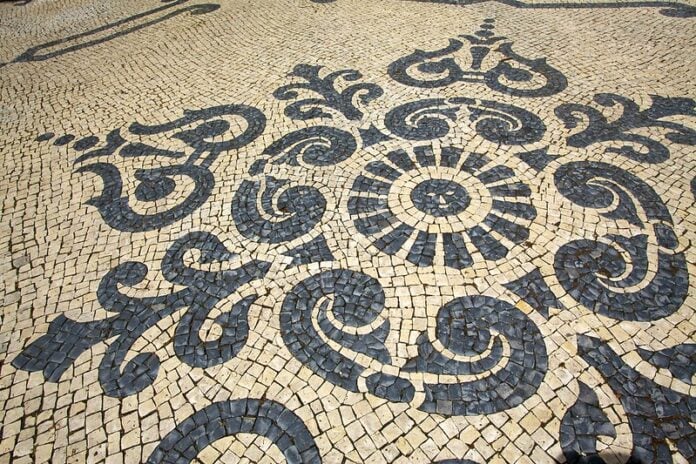Calçada Portuguesa, or Portuguese pavement, traces its origins back to the Roman Empire. Romans used stone mosaics to pave their roads, a technique that laid the foundation for what would become a defining feature of Portuguese urban landscapes.
In Portugal, this technique took on a unique character. The first recorded instance of Portuguese pavement was in Lisbon in the mid-19th century, inspired by Roman methods but adapted to local aesthetics and materials.
The Marquis of Pombal played a pivotal role in the development of Portuguese pavement. After the 1755 Lisbon earthquake, he initiated extensive rebuilding projects, incorporating stone mosaics to enhance the city’s resilience and beauty.
What Is Calçada Portuguesa Made Of?
Calçada Portuguesa is characterized by its use of black basalt and white limestone. These stones are meticulously cut and arranged to create intricate patterns, often depicting cultural and historical motifs.
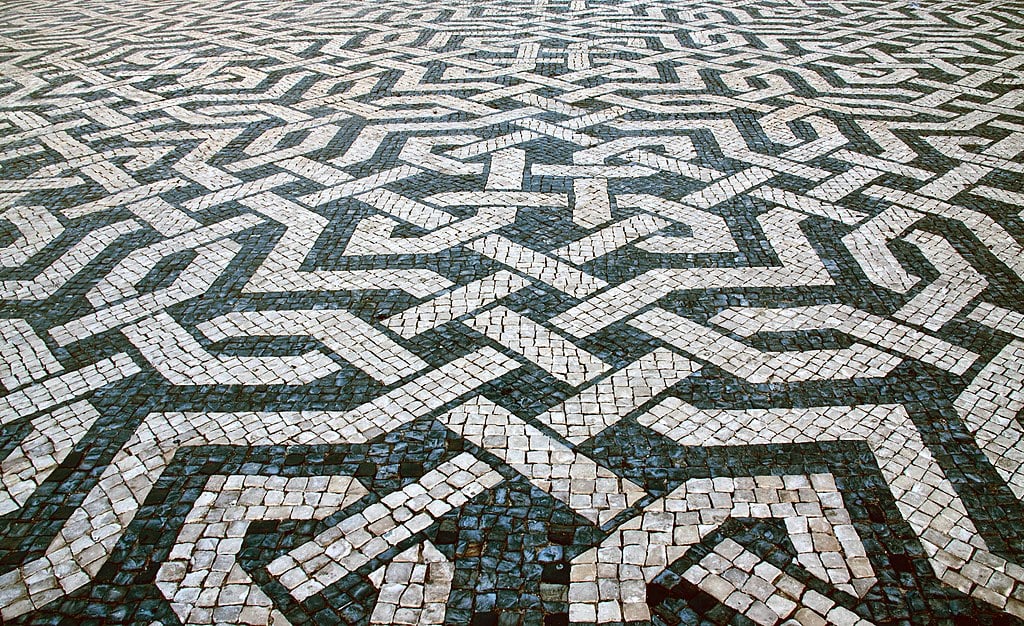
The first major project using this technique was the paving of Rossio Square in 1848. The success of this project led to the widespread adoption of Portuguese pavement throughout Lisbon and other Portuguese cities.
Portuguese pavement is both functional and a form of artistic expression. Patterns range from simple geometric designs to elaborate representations of ships, animals, and scenes from Portuguese history. Many pavements feature symbols of Portuguese identity, such as the cross of the Order of Christ or maritime motifs reflecting Portugal’s seafaring heritage. These designs serve as a cultural narrative in stone.
Portuguese explorers and colonizers spread the technique worldwide. Today, you can find Portuguese pavement in former colonies like Brazil and Macau, as well as in cities like Paris and New York, where Portuguese communities have left their mark. Crafting these pavements requires skilled artisans known as calceteiros. The process involves laying a sand foundation, placing the stones meticulously, and often embedding them with lime to secure the design.
Maintaining Portuguese pavement is labor-intensive. Over time, stones can become dislodged, and the intricate patterns require constant upkeep to preserve their beauty and functionality. Despite these challenges, Portuguese pavement remains a symbol of national pride. It reflects Portugal’s history, artistic heritage, and the enduring craftsmanship of its people.
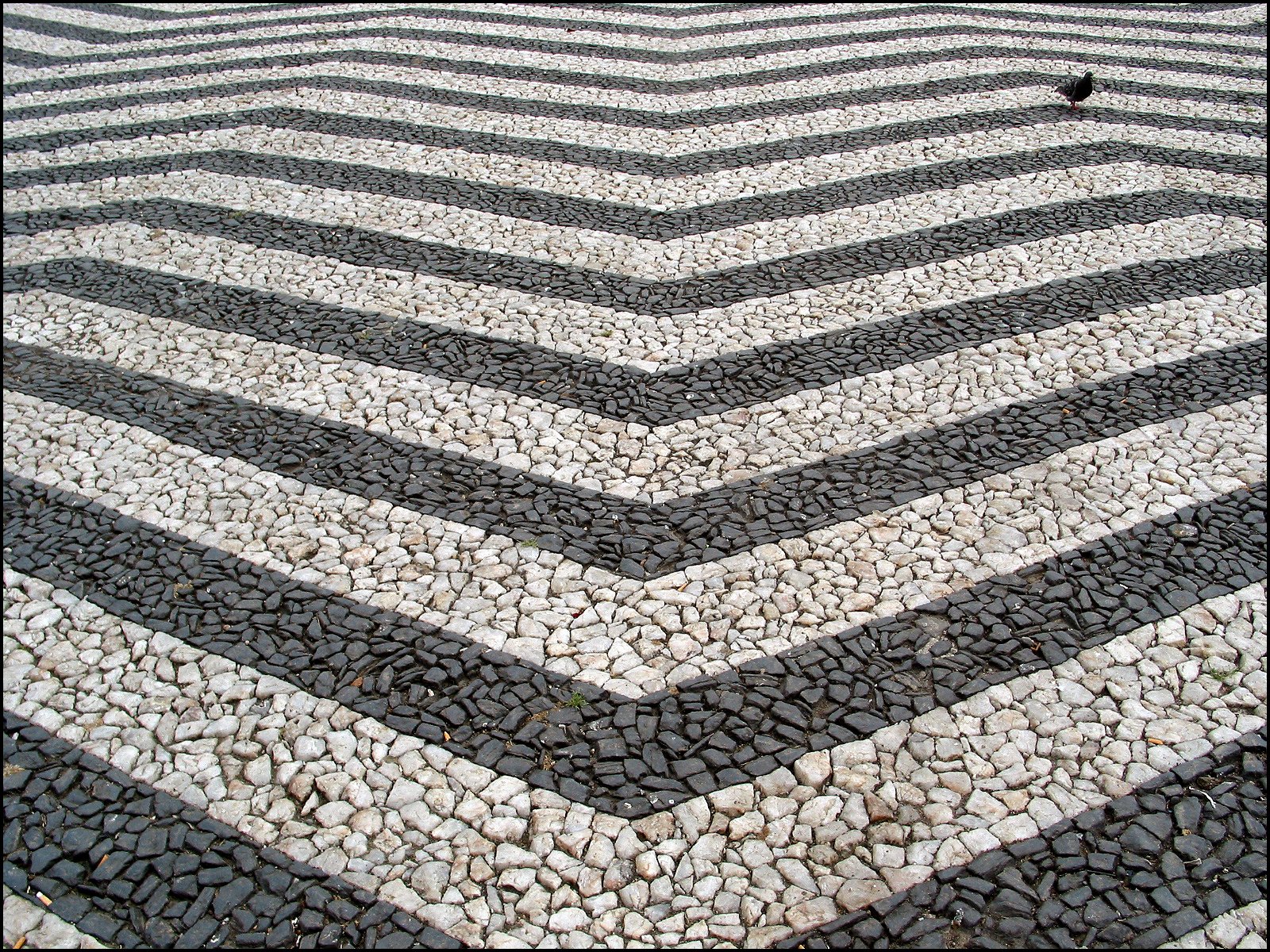
Should We Still Use Calçada Portuguesa?
In modern times, the use of Portuguese pavement has become a topic of debate. While it remains a beloved feature of historical city centers, its practicality in contemporary urban settings is questioned.
One of the main criticisms is safety. Portuguese pavement can be slippery when wet, posing a hazard to pedestrians. The uneven surface can be challenging for individuals with reduced mobility, making it difficult for wheelchairs and strollers to navigate the streets. Additionally, the uneven surface makes it difficult for people to run or move quickly over these stones.
The cost of maintaining Portuguese pavement is another issue. The specialized labor required for repairs is expensive, and the stones themselves can be costly to replace. These issues often lead to delays in repairs, making it more likely that someone may injure themselves stepping over the broken stones.
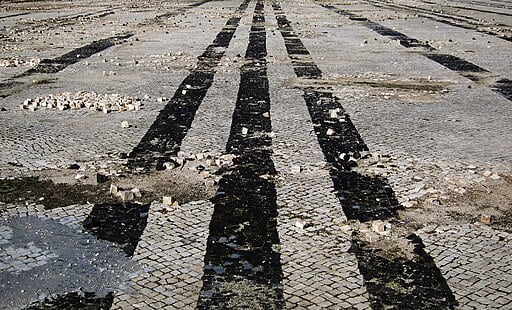
This raises a critical question: Should Portuguese pavement be preserved at the expense of practicality? In historical areas, it is cherished for its aesthetic and cultural value, but in other parts of the city, modern alternatives might be more suitable. Should calçada portuguesa be removed altogether apart from the main commercial avenues of a city?
Some cities have explored alternative solutions, such as using Portuguese pavement in combination with other, more practical materials. This approach aims to preserve the aesthetic appeal while addressing safety and accessibility concerns.
Public opinion on this issue is divided. Many people value the historical and cultural significance of Portuguese pavement and advocate for its preservation. Others prioritize safety and functionality, especially in more residential parts of the city.
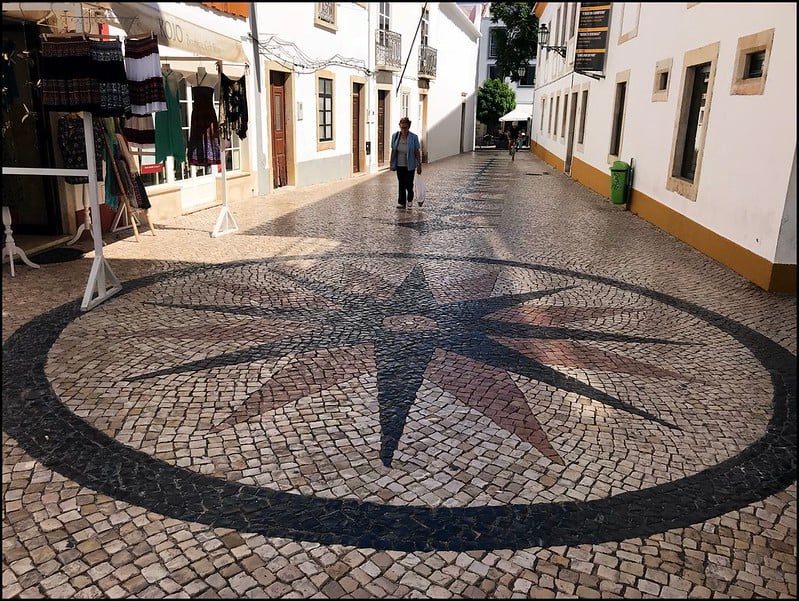
What Is the Future of Calçada Portuguesa?
One of the primary issues facing Calçada Portuguesa is the decline in new installations and the dwindling number of skilled artisans, known as calceteiros. The profession demands long hours and offers low wages, which has significantly reduced the number of apprentices entering the field. For comparison, in 1927, 400 calceteiros were active in the city of Lisbon. However, in 2020, there are only 18 registered calceteiros, of which only 11 are currently working. Without a new generation of skilled workers to carry on the tradition, the craft is at risk of fading away. This decline is exacerbated by the high cost and difficulty of obtaining suitable stones, making new projects less appealing for both public and private investors.
In response to these challenges, some cities have already begun replacing traditional Portuguese pavement with more practical materials. For instance, in 2005, Porto replaced much of its city center’s Calçada Portuguesa with granite blocks. Similarly, São Paulo has largely replaced the Portuguese pavement on Paulista Avenue with a more regular and cost-effective type of concrete pavement since 2007. These changes reflect a broader trend towards prioritizing functionality and safety over historical preservation.
Despite these trends, Calçada Portuguesa remains prevalent in certain areas, particularly in more affluent neighborhoods and historical districts. In Rio de Janeiro, for example, the traditional pavement is still widely used, especially in wealthier areas where there is a greater emphasis on maintaining cultural heritage. Additionally, places like the Asunción Super Centro building in Asunción, Paraguay, continue to showcase this iconic pavement, highlighting its enduring appeal in specific contexts.
Final Thoughts
Calçada Portuguesa represents a unique blend of artistic expression and cultural heritage, yet faces significant challenges in the modern era. It is already part of Portugal’s Intangible Cultural Heritage. However, its decline is driven by practical concerns like safety, maintenance, and economic viability. With strategic conservation efforts focused on historically significant and aesthetically valuable areas, hopefully, this iconic pavement can still play a role in urban cities. Balancing tradition with modernization will be key to preserving the legacy of Calçada Portuguesa for future generations.

